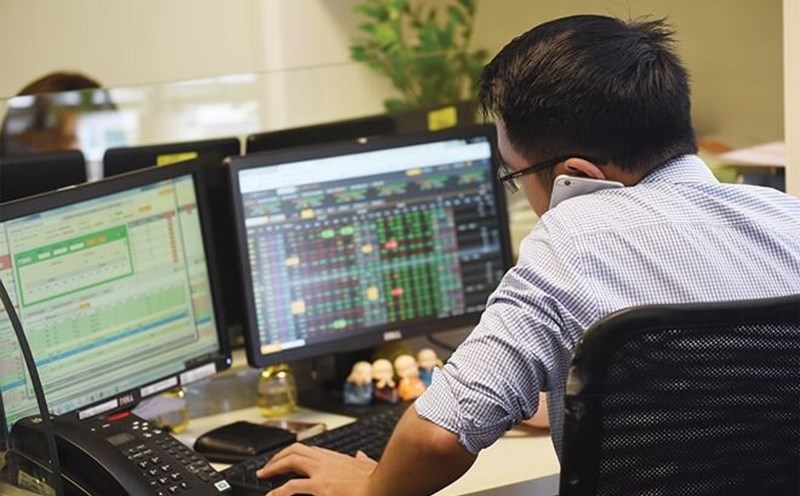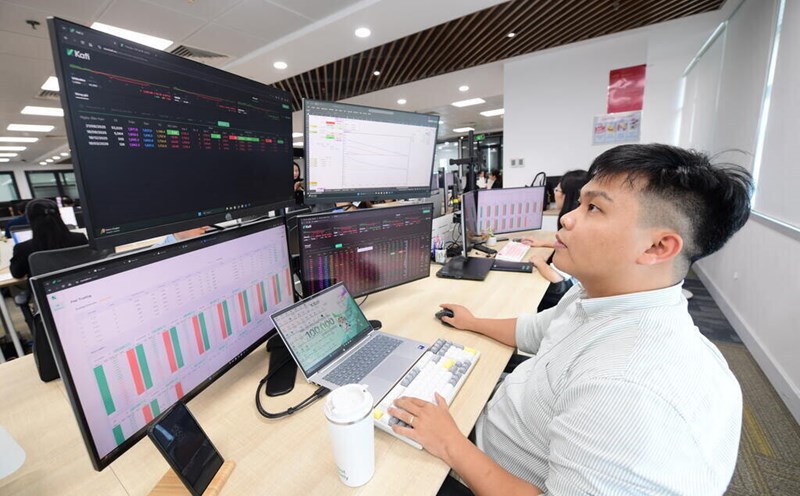The stock market has just experienced many emotions in the first trading sessions of September, especially the last session of the week on September 5. After reaching the 1,700-point mark for the first time in the history of the VN-Index, the market faced great pressure and turned down nearly 30 points, equivalent to losing nearly 45 points from the peak.
Entering today's new trading session (September 8), selling pressure is still overwhelming, causing the market to continue to sink into red. In particular, towards the end of the session, strong selling pressure caused the VN-Index to continue to decline sharply and close in red.
At the end of the trading session, the VN-Index decreased by 42.44 points, down to 1,624.53 points. The HNX-Index decreased by 9.1 points to 271.57 points. Market liquidity increased compared to the previous trading session, with the trading volume matched by the VN-Index reaching more than 1.76 billion shares, equivalent to a value of more than 49,200 billion VND.
Regarding foreign transactions, while domestic investors are selling strongly, this group returned to net buy more than VND 966 billion on the HOSE. In terms of impact, VCB, VPB, TCB and BID are the stocks that have the most negative impact on the VN-Index with more than 12.9 points of decrease.
Two consecutive sharp declines in the market after a series of hot days of increase are causing investor sentiment to fluctuate, as many expectations for higher points are still there. In this context, many investors question: what is the biggest risk for the current market, and what is a reasonable defense strategy to balance safety and opportunities
Mirae Asset predicts that large-amplitude fluctuations will continue, fluctuations with large-amplitude fluctuations will gradually become a normal thing for the market, as investors wait for the realization of positive news that is currently expected to almost completely reflect the increase of the VN-Index in the recent past.
A typical example is FTSE Russell's September assessment of the opportunity to upgrade the stock market to emerging market status and the decision to lower interest rates by the US Federal Reserve (Fed) at the upcoming September meeting. However, neither of these factors is new information.
The analysis team believes that any fluctuations in information can become a signal for investors to take profits, in order to preserve the accumulated results from previous months. With the story of upgrading, foreign capital flows following this decision are still considered long-term, because the large scale of capital will require a suitable disbursement roadmap. The current disbursement trend of foreign investors is still quite cautious.
Meanwhile, the analysis team is not too optimistic about the Fed's decision to cut interest rates at the present time as the impact of a widespread trading war will continue to affect inflation in the coming time - this will continue to limit the Fed's room for interest rate cuts in 2026 and exchange rate pressure on Vietnam will still exist.
For the trading prospects in September and the rest of 2025, Mirae Asset assessed that the medium and long term is still optimistic when the VN-Index still has room to increase, and can move towards a new historical peak of 1,800 - 2,000 points if the upward momentum remains and exchange rate pressure is within the allowable threshold of the State Bank. Accordingly, the two scenarios were proposed by the analysis team.
The base scenario is that the VN-Index is expected to establish a short-term support zone at 1,650 points and continue the uptrend to 1,800 points. The less promising scenario is that the VN-Index forms a medium-term support zone around 1,550 points.
Meanwhile, analysts from MBS Securities Company assessed that the biggest risk for the market at the current stage is the difficulty of maintaining a loose monetary policy, when inflation exceeds control at about 4.5%.
In fact, the CPI in August 2025 increased by 3.24%, slightly higher than the 3.19% in July 2025, the average since the beginning of the year CPI increased by 3.25% over the same period, still at a safe level, so the risk of inflation is not worrying but still worth paying attention to. In addition, if the FED does not cut interest rates in September as expected, it is forecasted that the global monetary policy signal could put pressure on the domestic market.










